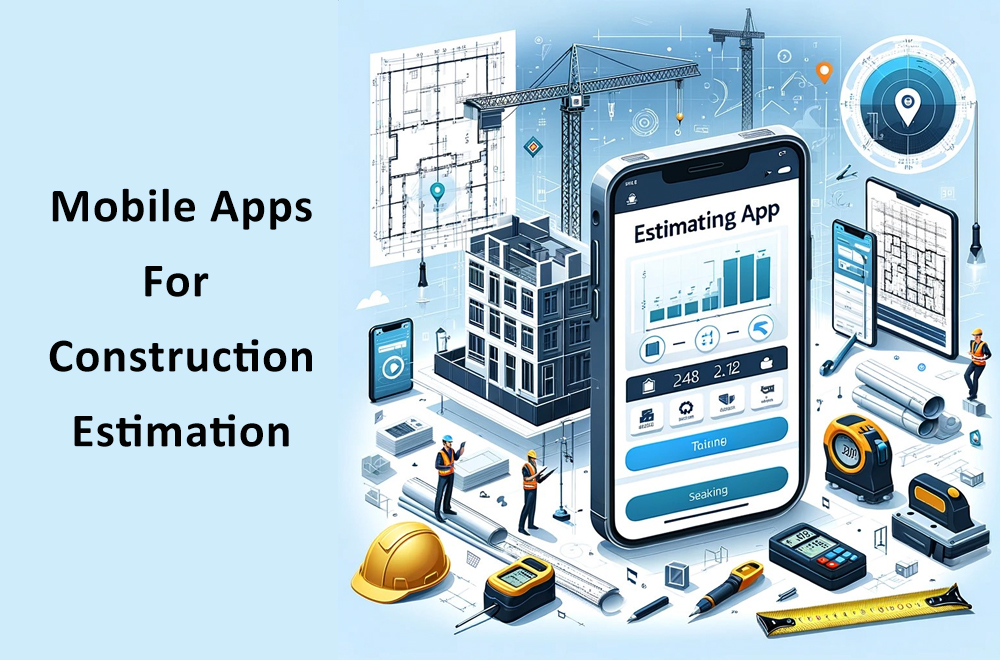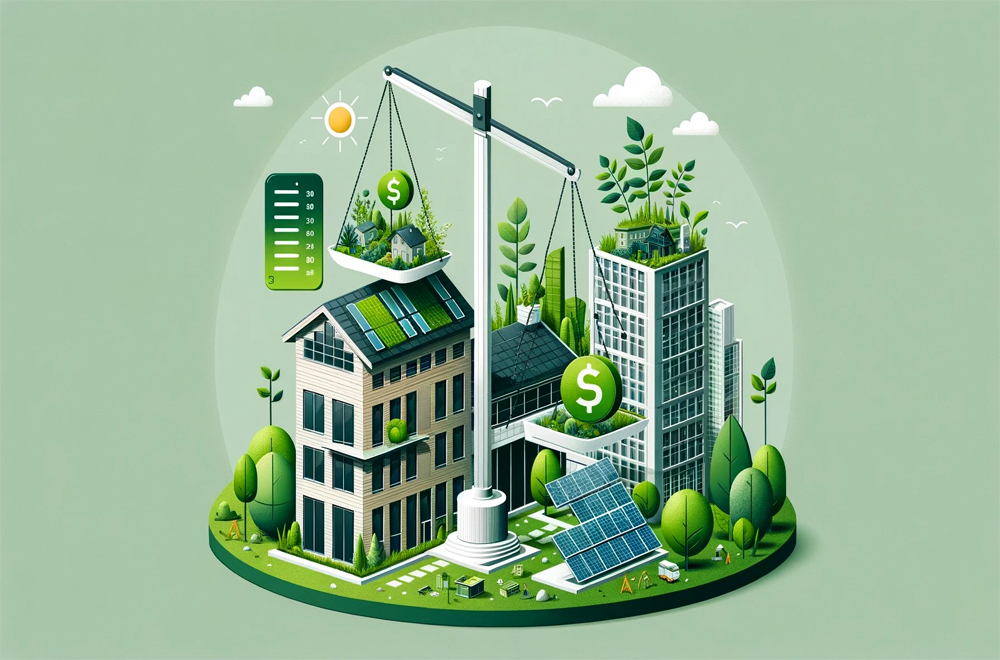If you’re running a construction business, there’s a good chance that you have experienced cash flow problems. Money goes out the door rapidly as your business gets invoices from all over. At the same time, getting paid for work can be very difficult sometimes. Unfortunately, the leading cause of construction business failure is cash flow problems. If you can’t pay employees and suppliers, then the leave or stop supplying your business. At the same time, most contractors collect the bulk of their profit at the end of the project. With that in mind, let’s take a look at the causes of these issues and discuss possible solutions.

Table of Contents
ToggleProblem: Materials Purchased Before Invoice Paid
Before starting any construction project, chances are that you will order a lot of materials. In addition, you may need to buy, rent, or repair equipment. These initial expenses are a drain on the company bank account. While it would be nice to have upfront money from clients to cover these expenses, most construction contracts don’t involve upfront payments. This means that you will need to budget money that pays for the initial labor and materials. Often, that means using money you’ve earned from other projects to pay those expenses. Fortunately, there are ways to mitigate this problem.
Solution: Get a Down Payment
In many situations, you can get your client to pay a small deposit. Your ability to do this will often depend on the type and funding model of your project. For instance, many contractors in trades such as roofing are able to get deposits from building owners. New roofs are expensive, but not as much as new construction. Plus, the money often comes from maintenance budgets. Commercial building owners will have a fund for this. Homeowners might pay for these repairs through a line of credit, credit card, or savings. Here, there is typically enough money to place a down payment.
Unfortunately, the issue is more difficult for general contractors. While it’s relatively easy to get a mortgage on homes that are being built by production builders, custom work is harder to finance. Often, this means getting a construction loan. These are wonderful from your standpoint as a contractor, because they disburse money over the life of the construction project. Residential customers who are using equity in their existing homes or a house they’ve sold will also often have some money. In this case, ask them for a down payment. This can be as little as 5-10% and will help cover initial labor costs.
Solution: Use Credit for Materials Purchased
One of the easiest ways to keep your bank balance high is to buy construction materials on credit. For example, some suppliers have an in-house financing department that works like a line of credit. Once you order materials, the price will be added to your credit balance. Then, you get billed monthly. If you are billing the client each month, then this allows you to pay on the same cycles as your client. While the due dates might not be the same, it puts income and expenses on similar frequencies.
Another way to do this is with a credit card. You can choose a store card for vendors like Home Depot or Lowe’s, or you can use a general-use Mastercard or Visa. In this case, you have revolving credit that can be paid back as you are able to do so. Besides the minimum payments, you will have discretion to pay as you get money from clients.
Solution: Be More Careful About Installation Timing
One of the ways that contractors shoot themselves in the foot with expenses is installation timing. Some items, such as quality flooring or high-end cabinets, cost a lot of money to purchase. If you buy and install these early in the month, and are on a monthly billing cycle, then it will be longer before you get paid. To combat this, try installing big-ticket items as close to the cutoff as you can. While you can’t always do this, it helps to make production schedules with billing in mind.
Problem: Fixed Assets Are Expensive
When we talk about “fixed assets” in the construction business, we mean things like a bulldozer, work trucks, or specialized machinery. From a cash flow standpoint, these are often quite challenging. Work trucks can cost $30,000 or more, depending on the specifications. You’ll also typically need at least one per work crew, meaning that most contractors own several. Bulldozers and other heavy equipment can be even more expensive. Plus, if you’re starting out then you likely must buy a lot of these pieces of equipment at once.
Solution: Know What You Really Need
Luckily, not every type of equipment is needed on all jobs. For instance, in residential construction you probably won’t need a 30-foot scissor lift very often. Most homes don’t have ceilings this tall. On the other hand, every house must have a foundation. Since foundations require digging, most general contractors will need heavy earth moving equipment regularly. Your first step to cost control here is knowing what’s worthwhile to maintain full time.
Solution: If You Rarely Need it, Rent.
If you only need something occasionally, consider getting a rental. Larger building supply stores have equipment for rent, often by the day. You can find out what rates they are charging, then compare the cost of renting for the number of necessary days against the price of ownership. If the comparison is favorable, add the direct cost of these rentals to your estimating, and bill the client. This way, the cost is only incurred when needed.
Solution: Lease or Use Financing
For fixed assets that you need on a regular basis, it’s often best to not pay cash. Instead, look into your financing options. Smaller assets such as computers can easily be purchased using installment plans. Once those plans are over, you will be left with just maintenance. Larger items such as bulldozers and trucks can often be leased. Here, you’re basically paying for a long-term rental. Not only do you have fixed monthly payments, but at the end of the lease you can get newer machinery. You should crunch the numbers and talk to a financial advisor to determine if installment purchase or leasing is more advantageous in your situation.
Problem: It Takes a Long Time to Get Paid
The bane of construction companies everywhere is the speed at which customers pay invoices. In fact, the average payment time for the construction industry is 60-90 days. While smart financing strategies can relieve the cash flow burden of fixed assets and materials, it’s harder to distribute labor expenses or utilities. Therefore, you need to get paid sooner rather than later. According to experts, the goal should be getting paid on average within 45 days.
Solution: Invoice on Time
Your first strategy should be timely invoicing. Have a regular billing schedule and stick to it. To see what this looks like, consider the average credit card company. Typically, they will have a gap of about 3 or 4 days between the payment due date and the statement closing. Then, you have to pay them 28 days later. Copy this strategy by having a closing date for your monthly billing. In this case, the closing day is the last day you do work for this particular bill. Then, get the statement out within a couple of days.
Practically speaking, this can be difficult depending on your clerical staffing levels. If you’re doing everything yourself, then consider setting aside time on the same day each week to send out billing statements. Once it gets too much for you to handle, consider hiring a billing service. They are experts at this and will often use computers to send out automated invoices. Alternately, hire an employee who does this.
Solution: Friendly Payment Terms
Customers like friendly payment terms. Whether this means accepting credit card payments or allowing for a weekly check, sometimes all it takes is a little flexibility. You will pay credit card and other merchant fees, but you can build these overhead costs into your estimates over time. Not only that, but it’s less of a headache than chasing down customers who are still “raising the money” to pay your invoices. Best of all, flexibility adds to your company’s positive image.
Solution: Persistent Collection Efforts
As the old saying goes, the squeaky wheel gets the oil. To increase your cashflow, it’s always important to collect receivables in a timely manner. This is sometimes more difficult in construction because many clients are used to taking their time when paying. Look at it this way: will you pay the credit card bill in full or buy food first? If your customer is having cashflow problems, then they will pay the most important bills first.
In a nutshell, your job is to be the most important bill. One way to do this is to remind them about their obligation regularly. For instance, send them a bill, then send a reminder a week later. You can also reach out to see if they have any questions about the invoice. Doing this will ensure that clients are aware you’re keeping track of accounts receivable. Plus, you can get any disputes dealt with as soon as they happen.
If a customer is late paying, don’t be afraid to get more assertive. One of the best collections tools available to us is the mechanic’s lien. Some states require you to file a notice with project owners prior to construction that asserts your rights to place a lien. By doing this, you are signaling your intent to enforce your rights. In other states, it’s often enough to remind a late-paying customer that you will file a lien if payment isn’t received. Having a lien on a property causes headaches for the homeowner, and the chances are they will do whatever it takes to avoid one.
Finally, consider having a written payment policy. This should include statements about when payments must be made, as well as your procedures for dealing with delinquencies. One way you can incentivize customers to pay is with late fees. These should be enough to pay for the extra finance charges on the materials purchased, as well as compensate for any need to draw on business credit to pay employees. In this way, you make payment failures their problem.
Problem: The Unexpected Happens
No matter how good you are at collecting money on time, there are some situations where cash flow will be problematic anyway. For instance, inclement weather which is well outside of the norm for your area can cause work stoppages. Depending on the time off rules for your company, you might end up paying for a large amount of lost productivity. Another situation is a major equipment breakdown. Not only are these expensive, but you sometimes need to wait for parts. At the same time, bills keep coming in. These contingencies sometimes require additional cash flow solutions.
Solution: Business Credit Line
Make sure you have prearranged credit line for when you need it. Most banks and credit unions offer business lines of credit that can be drawn upon when needed. The nice thing about them is that you only have payments when you’ve had to borrow money. Otherwise, it just sits there. So, when disaster strikes you can borrow the money for your business rent or other urgent invoices. Then, you can pay the money back after collecting on current invoices.
Solution: Factoring
Factoring is the process of borrowing money against your accounts receivable. Depending on the loan type, you can either have the bank essentially buy the account from you and then collect it themselves. Or, you can borrow the money with a promise to pay after the customer does. These tend to be relatively expensive loans, so you won’t want to use them regularly. However, they might be the best way to deal with a rough patch.
Dealing with cash flow problems is a major issue in construction. Upfront costs are high, and invoice payments are often slow. Even worse, profit is normally realized at the end of a project. Fortunately, using these techniques your construction business should enjoy better cash flow management over time.






